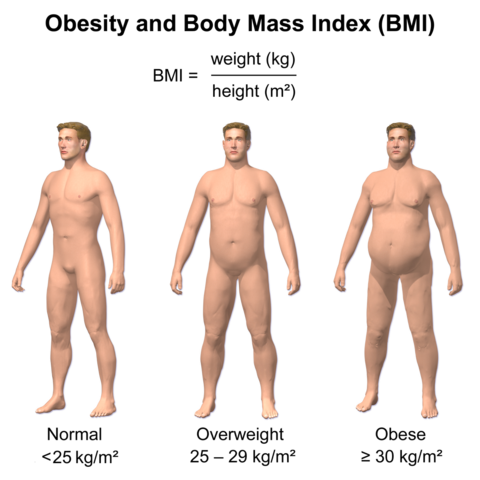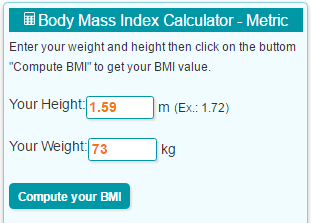BMI Calculator - Centimeters and Kilograms - Male and Female
Body Mass Index Calculator - Metric System
Important Note on BMI Web Tools
This tool does not provide medical advice. It also doesn't apply if you have at athletic/muscular build because muscle is not fat. Be carefull. Do not take any important decision about your health based on this or any other web tool.
Can BMI be used by everyone?
Body mass index (BMI) is a measure of body fat based on height and weight that applies to adult men and women. BMI is a rapid way to discover if you are overweight, obese, underweight or normal. See more about BMI below in this page.
For most people, BMI provides a good measure of obesity. However, BMI does not provide actual information on body composition (i.e. the proportions of muscle, bone, fat, and other tissues that make up a person’s total body weight), and may not be the most appropriate indicator to determine health status for certain groups of people. For example, athletes with dense bones and well developed muscles or people with large body frames may be obese by BMI standards (i.e. they have BMIs greater than 30), but yet have little body fat. On the other hand, inactive people may seem to have acceptable weights when, in fact, they may have too much body fat. Similarly, a petite gymnast may be considered underweight but not unhealthy. BMI, when used for children and adolescents who are still growing, pregnant women, people with large body frames, or petite and highly muscular individuals, should be interpreted cautiously.
Formulas used to calculate BMI
BMI, is calculated as weight divided by height squared. It is a simple measurement of body weight in relation to height. See the formulas below both in the metric system and in the US customary units or imperial systems of measurements:
| SI (metric) units |
|---|
| BMI = weight(kg) / (height(m))2 |
BMI Ranges - Understanding Body Mass Index
The table below applies for any person aged 18 years and over. These thresholds do not change with age and are the same for both men and women. Sources: Body Mass Index as a measure of obesity - NHS,
Body Mass Index and Health - USDA.
Note: BMI is NOT interpreted the same way for children as it is for adults. For children the relationship
between fatness and BMI varies with age and sex, so definitions of obesity and overweight need to take these two variables into account.
| BMI below 16.0 Kg/m2 | Severely underweight |
| BMI = 16.0 to 18.5 Kg/m2 | Underweight |
| BMI = 18.5 to 24.9 Kg/m2 | Normal weight |
| BMI = 25 to 29.9 Kg/m2 | Overweight |
| BMI of 30 or greater Kg/m2 | Obese |
Excess body fat is correlated to future risk of obesity-related illness. Other measurements you should make are: waist circumference and skin thickness. All these indicate a person’s weight status or body fatness.
BMI Chart
Body mass index chart. Thick lines show the major subdivisions, dashed lines other "principal cut-off points", and dotted lines "additional cut-off points".

